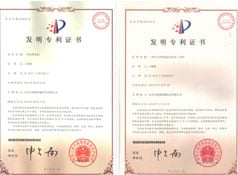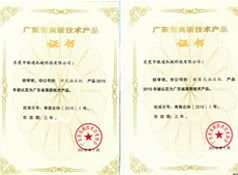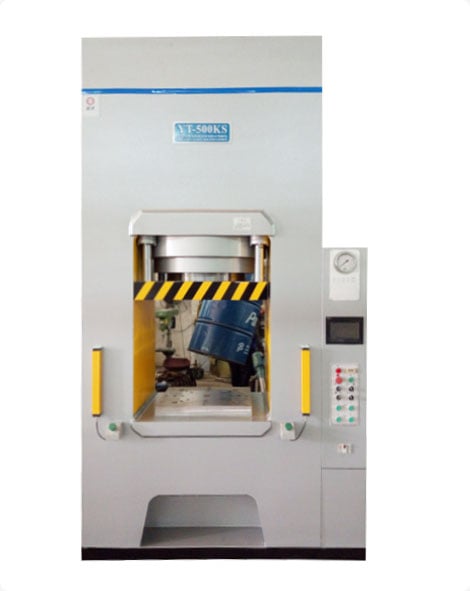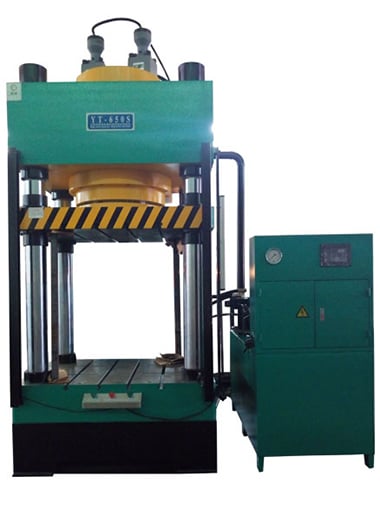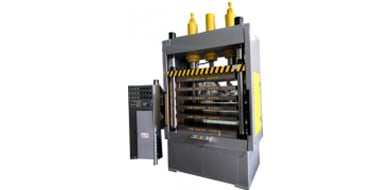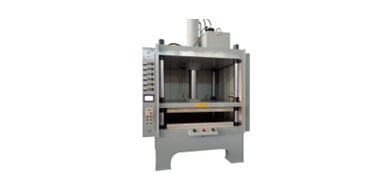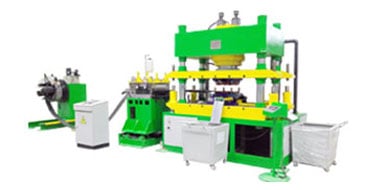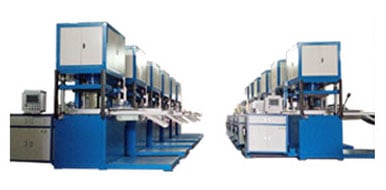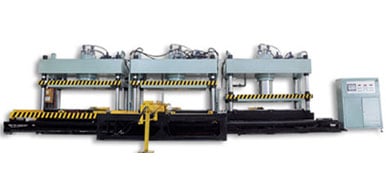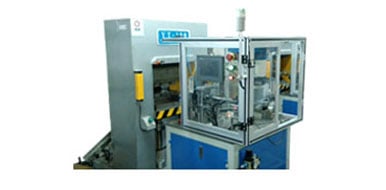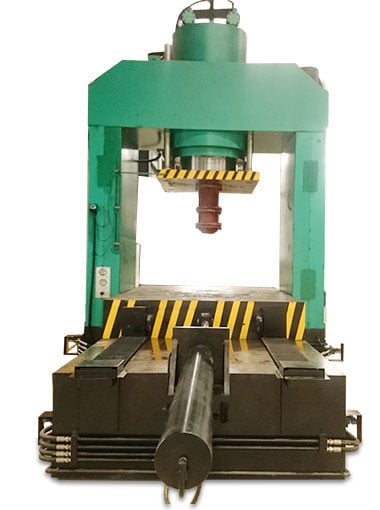Who Invented the Hydraulic Press?
time:2023-03-13 views:(点击 983 次)British inventor Joseph Bramah first created the hydraulic press in 1795 and patently protected it the same year.
The press works by using a plunger to exert pressure on a fluid in a small chamber. This force then multiplies and is applied to the larger force found in a master cylinder.
Joseph Bramah
The hydraulic press is a vital tool in many industries, particularly metal forming. Invented by Joseph Bramah - considered one of the fathers of hydraulic engineering - this machine remains widely used today.
Bramah was born at Stainborough Lane Farm near Barnsley, England and tragically injured in an accident at sixteen. This left him lame and unable to continue working on his family farm.
After completing his apprenticeship, he opened a carpentry and cabinet making shop in London. As he worked on personal projects, he became intrigued with the challenge of designing a pick-proof lock.
However, this proved challenging because the design required precision-engineered machine tools. To assist him, Bramah recruited Henry Maudslay - a blacksmith expert in devising and crafting machinery.
Their first joint project was the development of a slide rest for the lathe, which eliminated the need to hold cutting tools against metal while being cut. The iron fist of this slide rest held the tool firmly against metal while moving it evenly along a carriage, greatly improving accuracy and output in metal working.
Pascal’s Principle
The hydraulic press is a machine that utilizes the static pressure of liquid to shape and deform metals, plastics, rubber, and wood. It has become one of the most versatile and widely-used machines in modern industry.
Pascal's Principle, or Pascal's Law as it is commonly known, states that any force applied at one point of an enclosed fluid will be equally transmitted throughout its entirety. This principle was discovered by Blaise Pascal, a French mathematician and physicist.
This principle also applies to other kinds of liquids, like water and oil. According to Pascal's law, you can exert a pressure in a liquid that is 100 times greater than what was originally applied (based on Pascal's law). This type of force is known as hydraulic lift and used in numerous applications including automobiles.
Bramah’s Press
In 1795, Joseph Bramah invented a hydraulic press that exerts tremendous force on materials. Utilizing Pascal's principle, this powerful tool has numerous industrial uses such as precision tooling and sample preparation.
Based on Pascal's law, a hydraulic press works by building up pressure throughout its closed system, exerting equal force everywhere and at right angles to the walls. This force can then be transferred onto a workpiece and bent into any desired shape.
The Bramah press was an innovative invention and is considered one of the greatest achievements in engineering history. It ushered in a new era for product production methods.
Applications
Hydraulic presses are widely used in industrial processes. They're especially efficient at metal forming, bending and blanking.
These processes produce a range of materials, such as sheet metal, aluminum and titanium. Additionally, they may be employed in the creation of composites.
The hydraulic press is composed of two connected cylinders, called ram and plunger, that contain hydraulic fluid. When one piston is forced upward, pressure from within pushes down on its counterpart, creating equal force across both cylinders.
Hydraulic presses can be used for a variety of powder compacting processes, such as turning fat-free chocolate liquor into chocolate powder or compressing cosmetic and tablet powders. These methods are versatile enough to accommodate any type of hydraulic press from two column to four column models.
In addition to these common uses, the hydraulic press can also be employed in research and quality assurance procedures. For instance, it has the capacity to quickly and efficiently create microfluidic devices. Furthermore, it's commonly employed in pharmaceutical research for dissolution testing purposes.
Link to this article: https://www.ihydraulicpress.com/yn/1598.html
Hot Articles
-
Where to Buy 10 Ton Hydraulic Press
When traditional tools won’t do, this manual hydraulic press offers up to 10-ton of pressure. Ideal for disassembling and installing bearings,……
-
Blaise Pascal – What Did Blaise Pascal Use a Hydraulic Press For?
Pascal was a French mathematician, physicist, and religious philosopher renowned for advancing science during his lifetime. He created several pract……
-
How to Choose the Right Hydraulic Press
When shopping for hydraulic presses, there are plenty of models to choose from – each with their own distinct advantages. Be sure that the one……
-
What Is a Hydraulic Post Press Electric Platens?
Hydraulic press machines utilize hydraulic fluid in their cylinders to generate pressure that drives anvils and dies forward, acting like metal pipe……
-
Where to Buy Hydraulic Press Juicer
We may receive compensation or products from companies mentioned here, although their pricing information was accurate at the time of publishing (……
-
Why Is a Hydraulic Press So Powerful?
Hydraulic presses are formidable machines capable of creating massive amounts of force. Their functioning involves using two cylinders – one……
-
Who Created the First Hydraulic Press?
Hydraulic presses are machines that use fluid pressure to multiply force. Joseph Bramah of England invented and patented the first hydraulic press……
-
What Type of Press is Hydraulic Press Channel?
At Lauri Vuohensilta’s Finnish workshop five years ago this month, Lauri Vuohensilta began smashing everyday objects using his hydraulic press……
Latest News
-
Hydraulic Press Used in Manufacturing
The hydraulic press is an incredibly versatile and widely-used piece of manufacturing equipment. These machines can be utilized for stamping or form……
-
Where to Buy Hand Hydraulic Press
Hydraulic presses are powerful tools for shaping metal into new forms, used by metalsmiths and jewelry makers as well as industrial applications to ……
-
What Cant a Hydraulic Press Crush?
Since 2015, Finnish workshop owner Lauri Vuohensilta has been making waves online with videos showing him crushing objects with his hydraulic pres……
-
What is the Hydraulic Press Principle?
A hydraulic press machine utilizes Pascal’s law to generate force by compressing a confined liquid. This principle states that pressure applie……
-
What Is a Hydraulic Press Used For in the Printing Industry?
Hydraulic presses are machines used to apply pressure to a work piece. They’re useful tools for many purposes such as part production, metal f……
-

What Is a Hydraulic Press Cylinder?
Hydraulic presses are machines that produce compressive force at lower pressure to facilitate lifting heavy loads mechanically. Based on Pascal̵……
-

Hydraulic Press For Knife Making
Hydraulic Press For Knife Making Hydraulic presses are indispensable tools for many metalworking tasks. ,and the Hydraulic Press For Knife Making is……
-
Where to Buy Hand Hydraulic Press
Hydraulic presses are widely used to produce household items, automobile components and aircraft components – as well as straighten metal ob……


